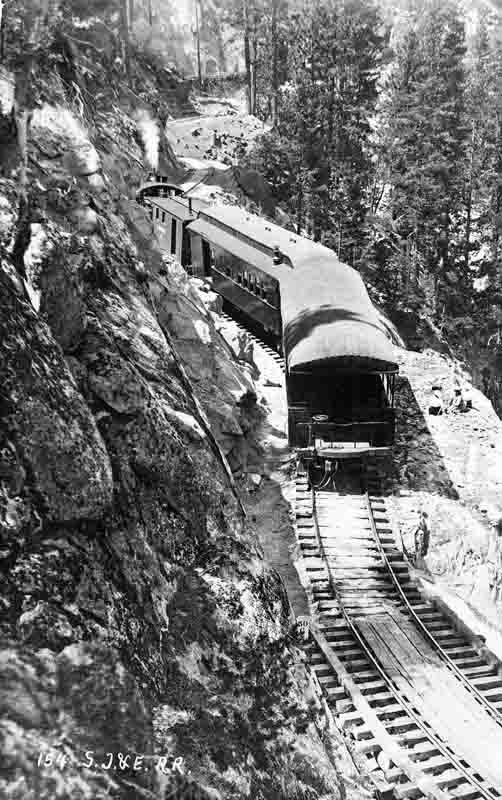Dates of operation 1912–1933 | ||
 | ||
Track gauge 4 ft 8 ⁄2 in (1,435 mm) standard gauge Headquarters Los Angeles, California | ||
The San Joaquin & Eastern Railroad (SJ&E) was a standard gauge common carrier railroad that operated in the foothills of the Sierra Nevada Mountains of Fresno County in the U.S. state of California. The line was abandoned in 1933. The railroad hauled primarily lumber and agricultural products.
Contents
History
The SJ&E was originally built to get men and supplies to the Big Creek Hydroelectric Project sites for the Pacific Light and Power Company (now Southern California Edison). The track was constructed for $1,055,728 by Stone & Webster Construction Company of Boston, the project's primary contractor. Grading commenced on February 16, 1912 and construction was completed on December 15, 1912. The 55 mile line started at El Prado (near Friant where it interchanged with the Southern Pacific Railroad. The SP branch continued on to Fresno where it intercepted the SP Mainline. From El Prado the line went east to Auberry and then terminated at Big Creek (Cascade/Cascada).
The railroad was known as the “crookedest railroad in the world”. The railroad featured 1073 curves up to 60 degrees. The railroad had 43 wooden trestles and 255 steep grades with the steepest at 5.3%.
The railroad was built for the sole reason of building the Big Creek hydroelectric project. When that was essentially complete, the need for the railroad ended. Over the years, it had only earned about 22% of what it cost to build and operate, leading to its nickname "Slow, Jerky, and Expensive. The line was abandoned and dismantled in 1933.
The caption on the picture is incorrect. The SJ&E ended at Big Creek. There was an incline that made it to the site of Huntington Lake for dam construction, but the RR proper never went that far. I beg to differ there is a local Fresno history book 'Vintage Fresno : pictorial recollections of a Western city.' by Eaton, Edwin M., 1890-1965. That talks about passenger rail trips up to Huntington Lake.
Route & Station Stops
Passenger Service
The railroad owned 5 passenger cars and the railroad's October 10, 1915 timetable showed an 8:00 a.m. departure from El Prado, arriving at Cascada at 2:25 p.m. The 55 mile trip operating on Mondays, Wednesdays and Fridays and returns on Tuesdays, Thursdays, and Saturdays. Passenger service continued as late as 1929. Some of the passenger traffic was attributed to tourists going to the resort at Huntington Lake during the summer.
US Forest Service Fire Patrol
1913 U.S. Forest Service speeder fire patrol operated along the San Joaquin and Eastern Railroad, California. An auto mounted on car wheels and equipped with fire fighting tools.
